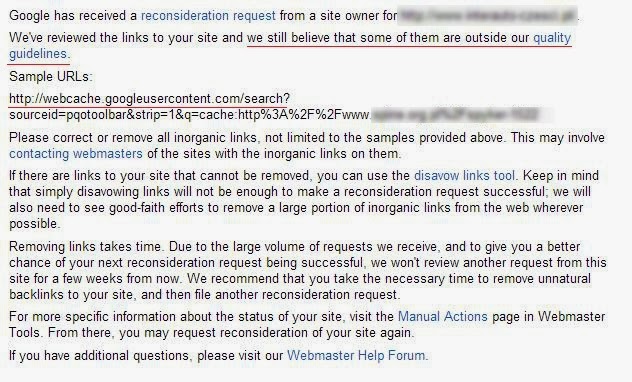
Temporary link schemes based on random link placement work a bit like this:
- Spam the web with links.
- Delete them soon after that (to avoid penalties but feed the algorithm).
- Count money.
But there’s a problem with this plan. Google’s webspam team is aware of it and they do take action against it. In a recent post on the SEO Hangout Panel, Marta Gryszko noticed a rather unusual reconsideration request reply:

Google webspam team included a link from a page in Google cache, as the original resource no longer existed. This raised a concern with some that even links from Google cache need to be considered when managing disavow files. Some speculated this was simply a human error, but John Mueller stepped in and clarified the matter after consulting with the team at Google.
Google’s webspam team sometimes does this when they suspect a pattern of rotating, temporary link schemes:
“I asked the team about this. Sometimes they do this if the link is on the cached page, but no longer on the live one (eg if it’s using a rotating link scheme).”
Can you just wait this out in hope that the link will be deemed as deleted? No. Google is aware of these schemes and will take action if the pattern of temporary link placement persists:
“If the webmaster is taking part in a link-scheme that uses rotating / random link placement, they need to get out of that. Otherwise a web-spam manual review (eg for the reconsideration request) will just bubble up the new links.”
Hopefully those who still think these types of link schemes are still effective will reconsider their approach after reading this post.
Great job Google!
Dan Petrovic, the managing director of DEJAN, is Australia’s best-known name in the field of search engine optimisation. Dan is a web author, innovator and a highly regarded search industry event speaker.
ORCID iD: https://orcid.org/0000-0002-6886-3211
